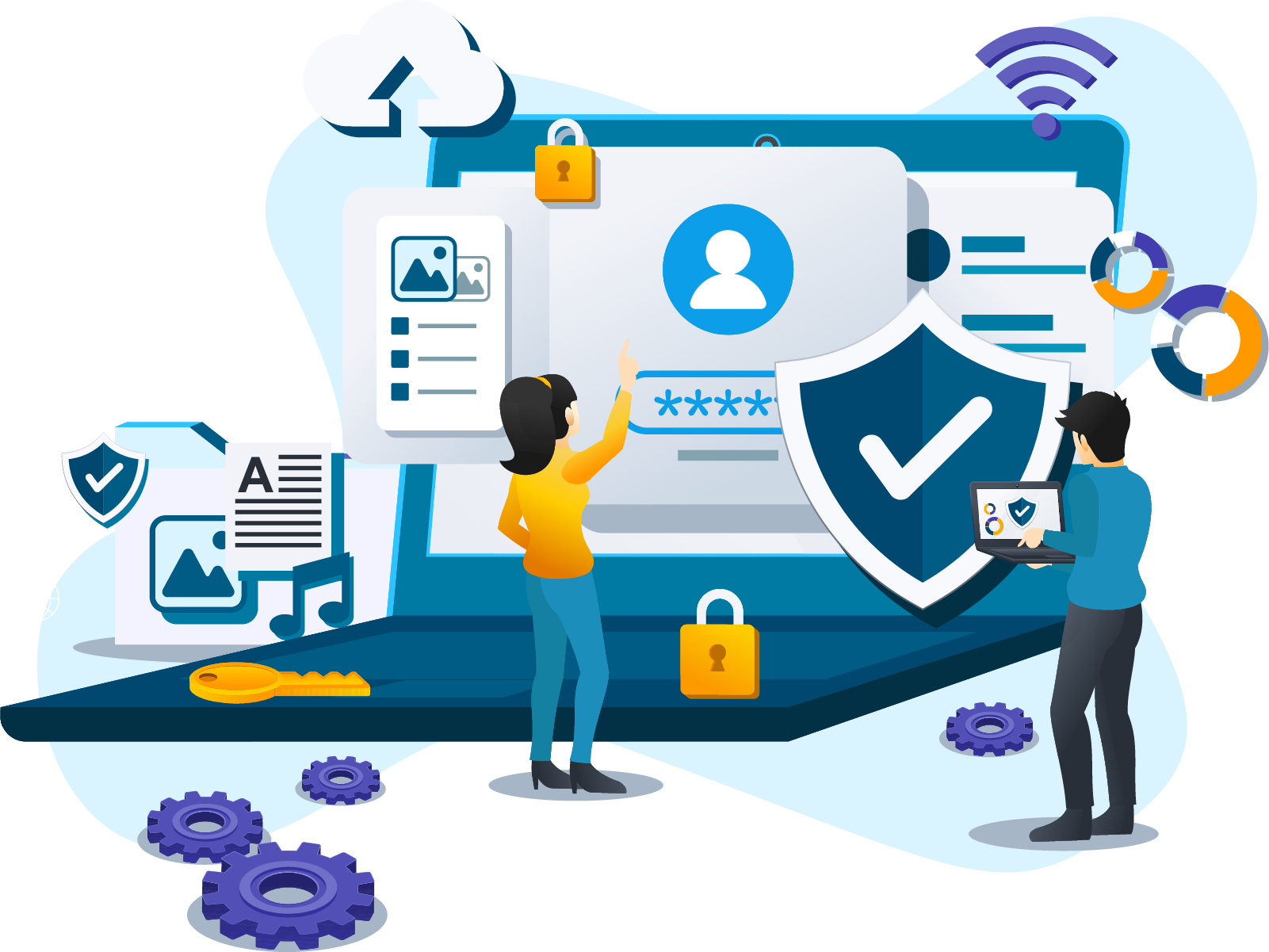29 December 2023
SafeAeon Inc.In the era of skyrocketing cyber threats, traditional brick-and-mortar Security Operations Centers (SOCs) are struggling to keep pace. SOCs, which are central hubs full of security experts, were the forts that kept companies safe from cyber threats. But in today's world of constant connectivity, these real fortresses can only do so much. Cybercrime is still on the rise and costs the world economy an incredible $6 trillion every year. In 2023, ransomware attacks alone increased by 13%. Traditional SOCs have a hard time keeping up with how complex threats are getting and how many of them there are.

The Virtual Security Operations Center (VSOC) is a big change in how we protect ourselves online. Visualize a worldwide network of very smart experts who can work from anywhere in the world using the latest cloud technologies. This flexible, scalable, and low-cost way of handling security is changing everything.
This is why VSOCs are the way of the future in cybersecurity:
- 1. 24/7 threat detection and reaction in real-time: VSOCs are powered by AI and machine learning, so they are always looking at data from your network and finding strange behavior before it turns into a full-blown breach.
- 2. Unlimited access to the best workers: Don't worry about the limits of room. VSOCs bring together cybersecurity experts from all over the world, giving them a unique set of skills and different points of view to help fight today's complicated threats.
- 3. Ability to grow on demand: No more rushing to get supplies during times of high attack. VSOCs can easily be scaled up or down based on your needs, giving you the best safety without the costs of having too much capacity.
- 4. Lightning-fast speed and agility: VSOCs are based in the cloud, which gets rid of data latency and physical barriers. This lets them respond very quickly to even the most complex attacks.
- 5. Cost-effective security without sacrificing quality: VSOCs get rid of the need for expensive hardware and full-time employees, making them a cheap way for small and medium-sized businesses to get enterprise-level security.
- 6. There is no doubt about the future: VSOCs are quickly becoming popular. 70% of businesses say they will set up a VSOC within the next three years, according to a new poll.
As cyber threats get worse, it's no longer an option not to use this next-generation method. Now is the time to build your virtual castle and become a leader in cyber defense.
Which organizations can benefit from a SOC or vSOC?
Large and medium-sized businesses are using virtual security operations centers (vSOCs) more and more as a strong defense against possible risks. They're especially helpful for companies that are already well-known or that are growing quickly, for companies that have to follow certain rules or protect sensitive information, and for companies that have employees from around the world. Because they know how important it is to have stronger security, these companies usually choose to either hire a vSOC to do their security tracking or set up their own operations center. As companies weigh the pros and cons of building their own security operations center (SOC) against the ease of use and experience of a virtual SOC service, the trend of outsourcing security operations is growing.
What Are The Different Types of Virtual Socs?
A traditional SOC has a physical location and equipment. A virtual SOC (vSOC) works in a decentralized, cloud-based way. It links a company's systems to a team that works from home so that events can be tracked and dealt with. There are different service models from different security vendors, which can be used to get full protection without having to buy hardware for your premises.
Type 1:
SOCaaS stands for "security operations as a service.”
With this option, you can get cloud-connected technology and expert help whenever you need it. SOCaaS uses cloud services to give real-time security data and is managed by an MSSP. This includes infrastructure, systems, data storage, and IT and cybersecurity tools that can be put together. Small and medium-sized businesses that might not have the means for an on-premise SOC will benefit the most from SOCaaS, which can be set up quickly and has lower costs for setup and maintenance.
Problems with SOCaaS:
Choosing the right provider is the hardest part since not all SOCaaS options have the same technology and customer service. A trustworthy company should provide important tools like SIEM to find threats, SOAR for handling incidents, compliance reporting, and tracking around the clock. Also, companies should check how SOCaaS services can be scaled up and customized to make sure they meet their changing security needs. It's also important to look at the provider's history of handling incidents and responding quickly.
Type 2:
Co-Managed SOC:
This approach adds to on-site monitoring by giving some tasks to staff from outside the company. It's a mix of on-site tools and tracking from outside the company. A co-managed SOC is great for businesses that are growing because it lets them prioritize certain security skills and technologies. They can then hand off lower-risk tasks to off-site companies while focusing their teams on more important tasks. This method can also make it easier to get advanced security tools and knowledge that might not be available in-house otherwise. Businesses that want to improve their security but don't want to pay for a specialized SOC can use this as an alternative.
Problems with Co-Managed SOC:
It's important to find the right partner and make sure that the internal and external teams are given an equal number of jobs. To avoid problems and disagreements, it's important to be clear about who is responsible for what. For security operations to go smoothly, it's also important for the internal and external teams to be able to talk to each other and work together. Also, companies need to make sure that the co-managed SOC provider knows how to meet their unique operational and security needs.
Type 3:
Multifunction SOC/NOC:
This model makes the best use of IT systems by combining network and security operations, sharing hardware, and distributing important tasks. This can be a good way to cut costs, but it needs to be carefully planned so that IT teams don't get too busy. It works especially well for small and medium-sized businesses that want to handle their network and security together. But it needs to be carefully planned out so that the shared structure doesn't hurt either network or security operations.
The problems with virtual SOC/NOC:
Putting SOC and NOC teams together means changing how things are done and who is responsible for what. Companies have to work through the challenges of a joint operation while making sure there are no holes in security or monitoring. For this cooperation to work, the SOC and NOC teams need to be able to talk to each other clearly and work toward the same goals. To keep both teams on the same page and up to date on the latest network and security management techniques, they also need regular training and changes.
Type 4:
Structure of Command SOC
A Command Security Operations Center (SOC) is made up of more than one SOC. A lot of the time, these are spread out around the world. The Command SOC is in charge of keeping an eye on everything. Its job is to oversee and organize SOCs that are located in different places or are only used by certain business units. Large companies are most likely to use this structure. These places have groups of very smart people who work on defense. These people are responsible for putting cybersecurity procedures into place, managing them, and making sure they are followed. The Command SOC provides a full security setup. But it's not made to meet the everyday security needs of small companies.
The Problems of Setting up a Virtual Command Center
Setting up a Command SOC is hard and covers a lot of ground, so most businesses might not be able to do it. Companies that use this kind of system are usually ones that can afford to have their own specialized SOC solutions. It's not easy to find a Managed Security Service Provider (MSSP) that has all the tools and features you need for a Command SOC. Also, a Command SOC isn't usually made to deal with everyday, low-level security risks. Its main job is to keep an eye on several SOCs that are directly in charge of handling these kinds of day-to-day security issues.
Conclusion
Building a strong Virtual Security Operations Center (vSOC) is a key part of making defense stronger. A good vSOC needs to be flexible and adaptable so that it can keep up with new cyber threats and best practices. It needs a perfect mix of skilled workers, efficient processes, and cutting-edge technology. By paying attention to these important factors, businesses can find a vSOC partner that is good at finding and reducing cyber risks. This will protect their own and their clients' digital assets. A proactive and flexible vSOC is not only helpful in a world where cyber threats are always changing, but it's also necessary to protect against the complicated digital threats of today. If you have been looking for a robust Virtual Security Operations Center then you must get in touch with SafeAeon.














